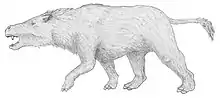Interatheriidae
Interatheriidae is an extinct family of notoungulate mammals from South America. Interatheriids are known from the Middle Eocene (Mustersan) to the Early Pleistocene (Uquian).[1][2][3] These animals were principally small-sized, occupying a habitat like hares, marmots and viscachas. The majority were very small, like rodents.
| Interatheriidae | |
|---|---|
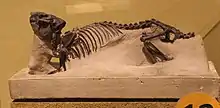 | |
| Skeleton of Interatherium rodens in the Field Museum of Natural History, Chicago | |
| Scientific classification | |
| Domain: | Eukaryota |
| Kingdom: | Animalia |
| Phylum: | Chordata |
| Class: | Mammalia |
| Order: | †Notoungulata |
| Suborder: | †Typotheria |
| Family: | †Interatheriidae Ameghino 1887 |
| Subfamilies and genera | |
| |
Interatheriidae is one of the mammal groups that best represent the fauna from the Santa Cruz Formation. Particularly Protypotherium with three species is characteristic of the formation: P. australe, P. praerutilum and P. attenuatum. Another well-known genus is Interatherium, particularly well represented by I. robustum.
References
- McKenna & Bell, 1997
- Linares, 2004
- Carrillo-Briceño, J.; Sánchez, R (23 April 2021). "A Pliocene–Pleistocene continental biota from Venezuela". SpringerOpen. 140 (1). doi:10.1186/s13358-020-00216-6. Retrieved September 28, 2023.
Bibliography
- Linares, Omar J. 2004. Bioestratigrafía de la fauna de mamíferos de las formaciones Socorro, Urumaco y Codore (Mioceno Medio-Plioceno Temprano) de la región de Urumaco, Falcón, Venezuela. Paleobiología Neotropical 1. 1–26. Accessed 2017-08-15.
- McKenna, Malcolm C., and Bell, Susan K. 1997. Classification of Mammals Above the Species Level. Columbia University Press, New York, 631 pp. ISBN 0-231-11013-8
Further reading
- C. Villarroel and L. G. Marshall. 1989. A new fossil land mammal locality of late Miocene (Huayquerian) age from Muyu Huasi, southcentral Bolivia. Boletin del Servicio Geológico de Bolivia, Serie A IV(1):27-40
This article is issued from Wikipedia. The text is licensed under Creative Commons - Attribution - Sharealike. Additional terms may apply for the media files.

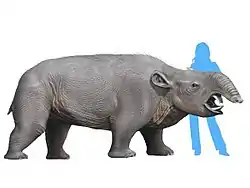
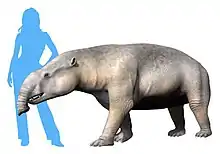
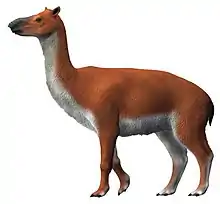
.jpg.webp)

